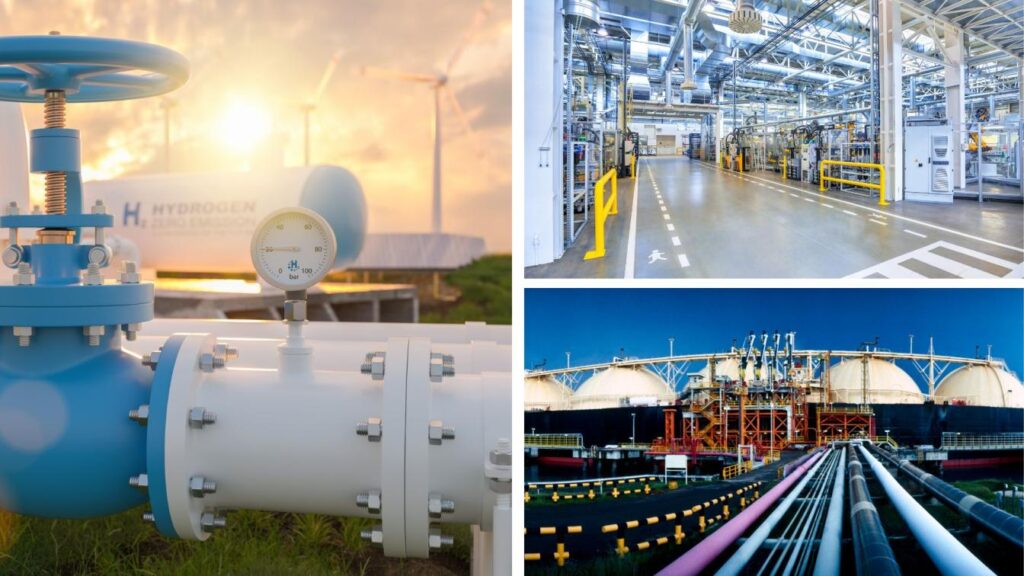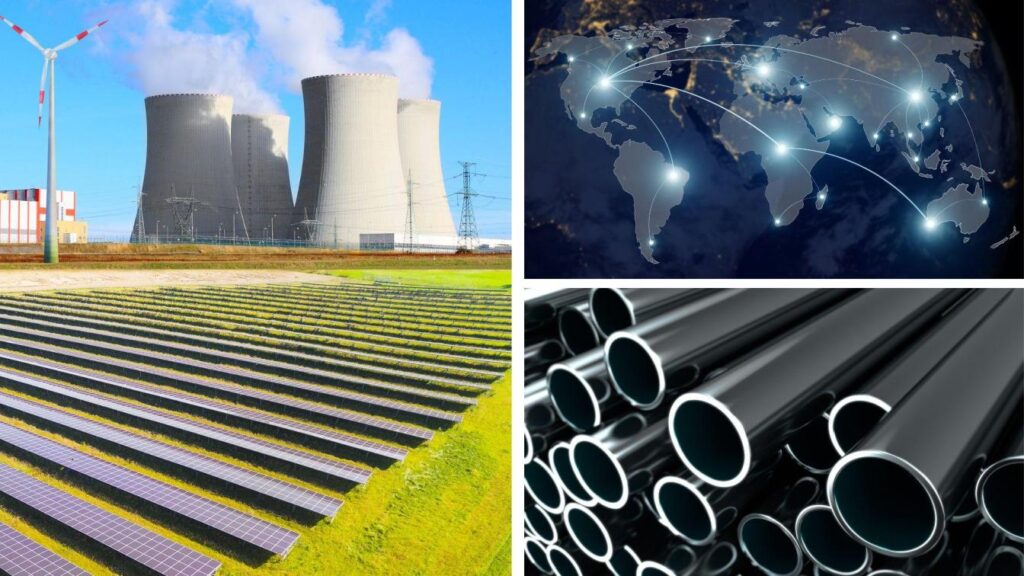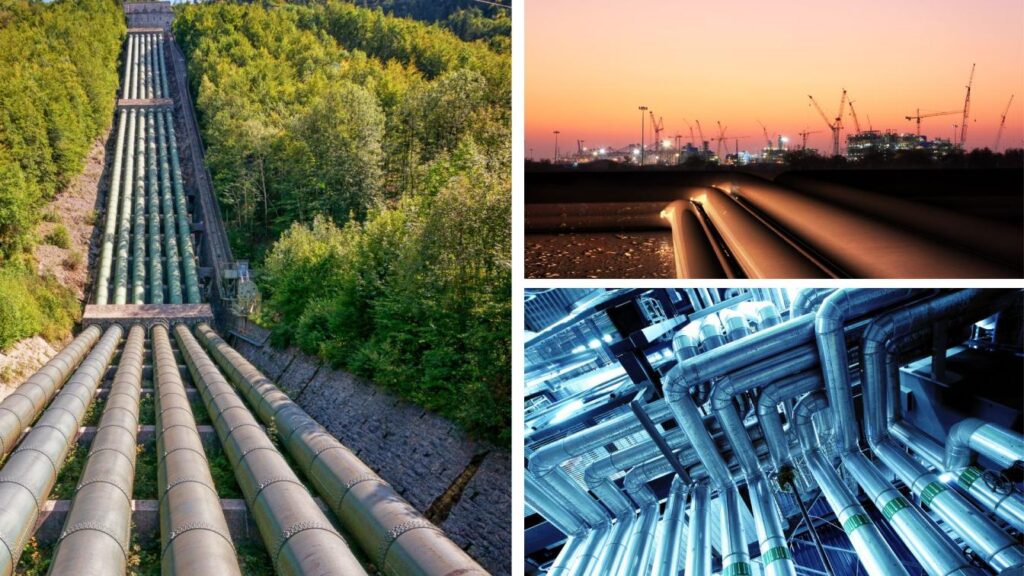Australia has set an ambitious goal to become the world’s largest exporter of green hydrogen by 2030. The country’s abundant renewable energy resources, infrastructure, and proximity to major Asian markets position it well to achieve this aim.
Green hydrogen, produced via electrolysis powered by renewable energy, is seen as a key fuel to enable the global energy transition and decarbonization of hard-to-abate sectors. Demand for green hydrogen in Asia and Europe is expected to grow exponentially in the coming decades. Australia is gearing up to tap into this enormous export opportunity.
Australia’s Advantages for Green Hydrogen Production
Australia has several key advantages that give it the potential to dominate the emerging green hydrogen export industry:
Renewable Energy Resources
- Australia has some of the world’s best solar and wind resources, concentrated in areas with low population density. Studies estimate Australia has about 25,000 GW of renewable hydrogen production potential – far more than domestic needs.
- locations like the Pilbara region in WA have solar capacity factors exceeding 30%, providing ideal conditions for low cost solar PV generation.
Infrastructure
- Australia has extensive gas pipeline networks and LNG facilities that could potentially be repurposed for hydrogen exports.
- The country has well-established bulk commodity export facilities at ports close to areas of high renewable resource potential.
Proximity to Major Asian Markets
- Australia is geographically close to major future green hydrogen importers like Japan, South Korea and Singapore. Shipping costs to these markets will be lower compared to rival exporters in the Middle East, Africa or the Americas.
Skilled Workforce
- Australia has an experienced workforce in the resource and energy export industries that can be leveraged for green hydrogen.
Supportive Policy Environment
- Federal and state governments are introducing incentives and investments to support green hydrogen. The WA government aims for the state to achieve 10% of global hydrogen exports by 2030.
Major Green Hydrogen Projects in Australia
There are over 100 green hydrogen projects currently proposed or under development across Australia. The combined pipeline has attracted over $100 billion in potential investment. Some of the largest include:
Western Green Energy Hub (WA)
- Located between Geraldton and Kalbarri in WA’s mid-west region.
- Led by InterContinental Energy, CWP Global and Macquarie Group
- Plans for up to 50 GW capacity (30 GW electrolysis) to produce up to 3 million tonnes of green hydrogen or 20 million tonnes of green ammonia per year.
- Targets exports to Asia from the mid-2020s.
Asia Renewable Energy Hub (WA)
- Located in the Pilbara region of WA.
- Backed by CWP Renewables, wind turbine supplier Vestas and multiple investment funds.
- Plans for up to 26 GW of wind and solar capacity powering around 10 GW of electrolysers to produce green ammonia.
- Targets exports to Asia from 2028.
Murchison Renewable Hydrogen Project (WA)
- Located in the mid-west region of WA.
- Led by Australian company Murchison Hydrogen Renewables.
- Plans for 3 GW electrolyser capacity to produce around 300,000 tonnes of green hydrogen per year.
- Targets production for domestic use and exports from 2026.
Eyre Peninsula Gateway Project (SA)
- Located on SA’s Eyre Peninsula.
- Led by Hydrogen Utility (H2U)
- Plans for initial 10 MW electrolyser scaling up to 3 GW capacity.
- Targets green ammonia production for export.
Hunter Hydrogen Network (NSW)
- Centered around the Port of Newcastle and Hunter Valley region of NSW.
- Backed by multiple companies including Origin Energy, Lake Macquarie City Council, Port of Newcastle.
- Plans for over 2 GW production capacity to supply domestic users and exports.
Progress of Green Hydrogen in Western Australia
As home to some of Australia’s most ambitious green hydrogen projects, Western Australia is positioning itself to play a leading role in this emerging export industry.
Major Projects Taking Shape
Several major WA projects have progressed significantly over the past year:
- The Western Green Energy Hub has completed feasibility studies, commenced site preparation works and progressed approvals. It aims to make final investment decisions in 2023.
- The Asia Renewable Energy Hub has cleared key regulatory approvals from state and federal environmental agencies. It is also targeting investment decisions next year.
- Yuri Renewable Hydrogen Project at Yara Pilbara fertilizer plant achieved financial close in 2022 on a 10 MW electrolyser. It will be the first project in WA to produce renewable hydrogen.
WA Government Support
The WA government has introduced a range of measures and investments to help drive development of the green hydrogen industry:
- $300 million Renewable Hydrogen Fund – provides grants for feasibility studies and capital works.
- Renewable Hydrogen Target (under development) – will create tradeable certificates to incentivize electrolytic hydrogen production.
- $70 million Pilbara Hydrogen Hub – supports enabling infrastructure to produce and export hydrogen.
- $117 million Oakajee Strategic Industrial Area – will help develop the region as a renewable hydrogen hub.
Emerging Green Hydrogen Cluster
Multiple projects clustered together can help reduce costs and create a viable green hydrogen export industry. WA’s Oakajee Strategic Industrial Area (SIA) is one such emerging cluster:
- Oakajee SIA covers approximately 8000 ha of industrial zoned Crown land north of Geraldton.
- It is close to renewable energy resources and export infrastructure.
- Oakajee Hydrogen OPCO plans a 600 MW electrolyser facility onsite.
- Copenhagen Infrastructure Partners intends a large-scale green ammonia plant at Oakajee.
- The region was recently selected as a potential location for the Commonwealth’s $70 million Mid-West Hydrogen Hub.
Challenges and Opportunities
Developing an entirely new export industry from scratch does not come without risks and difficulties. Some key challenges and opportunities that will influence Australia’s green hydrogen ambitions include:
Bringing Down Costs
- Currently, green hydrogen costs $3-$7/kg to produce in Australia – but needs to fall below $2/kg to be export competitive.
- Opportunities exist to lower costs through scaling up technology, increasing renewable energy efficiency, and developing clusters/hubs.
Securing Offtake Agreements
- Major projects need large offtake agreements with overseas buyers to underpin their development.
- Australia’s trading relationships and hydrogen export agreements with Asian countries will be crucial to securing these offtakes.
Growing Domestic Demand
- Developing domestic hydrogen demand will help support industry growth – through transport, gas networks, mining uses etc.
- State renewable hydrogen targets and fuel standards can help create local market pull.
Competing Exporters
- Australia’s key export competitors like Saudi Arabia, Chile and Middle East nations have also set ambitious green hydrogen plans.
- Maintaining Australia’s first mover advantage will be important in the face of increasing competition.
Community Acceptance
- Some green hydrogen projects have faced concerns and opposition from local communities and Aboriginal traditional owner groups.
- Best practice consultation and engagement processes will be vital to maintaining community acceptance.
Infrastructure
- New infrastructure like hydrogen pipelines, port facilities and ship loading will require large investments.
- Government co-investments can help derisk these projects initially.
Conclusion
Australia has a tremendous opportunity to build an entirely new renewable energy export industry and become a major green hydrogen supplier to Asia. Western Australia is set to play a leading role, with multiple gigawatt-scale projects underway and increasing government support.
However, success is not guaranteed. Bringing down production costs, securing buyers, growing domestic demand and maintaining community acceptance will be critical in the face of global competition. With concerted efforts from industry and government, Australia could cement its position as the Saudi Arabia of renewable hydrogen exports by the end of the decade.

Why Western Australia is the Right Place for Green Hydrogen Investment
The emerging green hydrogen industry presents a huge global investment opportunity over the coming decades. Western Australia is considered one of the most attractive locations worldwide for potential investors in this sector.
With abundant land, renewable resources, infrastructure and expertise, WA is capable of developing mega-scale green hydrogen projects to serve both domestic and export markets. The state’s stable investment environment and supportive policy landscape provide further incentives.
This article examines WA’s advantages and the projects underway that are positioning the state as a renewable hydrogen leader.
Western Australia’s Natural Advantages
WA has several natural endowments that make it a prime location to produce low cost green hydrogen for export:
Land Availability
- WA covers 2.5 million square km, equal to the combined area of Texas + California. But it has a population of only 2.6 million.
- There are large, sparsely populated regions ideally suited for massive solar and wind farms.
- Abundant suitable land provides space for 100+ GW scale renewable hydrogen projects.
World-class Renewable Resources
- WA has some of the world’s best solar irradiation and wind speeds. Capacity factors frequently exceed 30%.
- Areas like Exmouth have measured solar capacity factors up to 41% – on par with the best locations globally.
- Exceptional renewables means low LCOE electricity – key for green hydrogen cost competitiveness.
Existing Infrastructure
- WA has substantial gas pipeline networks, such as the Dampier Bunbury Pipeline, that could be repurposed for hydrogen.
- Multiple export facilities suitable for green hydrogen exist – like Yara Pilbara fertiliser jetty.
- Leveraging existing infrastructure improves project economics vs building from scratch.
WA’s Project Pipeline
With these natural advantages, WA has attracted massive interest from developers – attesting to its investment appeal:
- Over 30 renewable hydrogen projects proposed in WA, from feasibility through to approved.
- Collectively, these could amount to more than 100 GW production capacity – far more than required for domestic needs.
- Many proponents are global energy/resources players like BP, ENGIE, Fortescue Future Industries.
Some of the largest WA green hydrogen projects that underscore investor appetite include:
Western Green Energy Hub
- 50 GW wind/solar plant near Geraldton powering 30 GW electrolysis.
- Led by Intercontinental Energy, CWP Global and Macquarie.
- Targets 3+ million tonnes H2 exports annually.
Asian Renewable Energy Hub
- Located in Pilbara region, plans 26 GW wind/solar powering 10 GW electrolysis.
- Backed by Vestas, CWP Renewables and investors. Aiming for exports.
Murchison Renewable Hydrogen Project
- 3 GW solar/wind powering 1.8 GW electrolysis in mid-west WA.
- Developed by Murchison Hydrogen Renewables, 300,000 tpa target.
These projects demonstrate WA’s potential to host multi-billion dollar investments in green hydrogen.
Supportive Policy Environment
In addition to natural advantages, WA offers investors a supportive and stable policy environment:
- Long history of resources development – including LNG exports valued at $30 billion annually.
- Renewable Hydrogen Strategy – outlines plan to build H2 export industry by 2030.
- $300 million Renewable Hydrogen Fund – provides grants for feasibility studies and capex.
- Renewable Hydrogen Target (under development) – will subsidise production to boost demand.
- Investment assurances – WA’s agreement with Commonwealth prevents environmental approval changes.
- Industrial land provision – Oakajee SIA ready to support large-scale renewable H2 plants.
These measures create an attractive and de-risked landscape for investors and developers.
Emerging Clusters – Oakajee as a Case Study
The development of renewable hydrogen clusters or hubs further builds WA’s investment case. Oakajee SIA offers an excellent case study:
- Strategically located – just north of Geraldton, close to renewable resources and export infrastructure.
- ** 8000+ ha industrially zoned land** – available for large green hydrogen projects.
- Common user infrastructure model – shared pipelines, power, port facilities.
- Oakajee has attracted several major project proposals:
- Oakajee Hydrogen OPCO – 600 MW electrolyser facility.
- Copenhagen Infrastructure Partners – large green ammonia plant.
- Set to host Australia’s $70 million Mid-West Hydrogen Hub.
Oakajee demonstrates WA’s ability to provide ‘investment ready’ clustered green hydrogen hubs.
Challenges and Opportunities
Despite the advantages, developing green hydrogen megaprojects in WA is not without challenges. But for smart investors, challenges represent opportunities:
High Capital Costs
- Green hydrogen requires large upfront capital – but over 30-year life assets become very profitable.
- Patient equity capital suited to pension funds, infrastructure funds.
Offtake Agreements
- Securing offtake critical to underpin bank debt financing. Requires relationships with creditworthy buyers.
- Ability to negotiate strategic partnerships with buyers becomes key value proposition.
Cost Competitiveness
- Currently green hydrogen costs $3-$7/kg – needs to fall below $2/kg. Big scale and renewable LCOE key.
- Existing players can gain advantage from deployment experience down cost curve.
Community Engagement
- Some projects have faced opposition from locals and Aboriginal groups.
- Companies able to demonstrate genuine community benefits will be favored.
For investors and developers able to navigate these dynamics, the opportunities outweigh the challenges.
Conclusion
WA offers one of the world’s most attractive destinations for large-scale green hydrogen investments that can serve massive upcoming export demand in Asia.
The state provides a unique combination of abundant land, world-class renewable resources, infrastructure, policy support and investment incentives. Emerging project clusters also showcase WA’s ability to host multi-billion dollar integrated hydrogen hubs.
Navigating community and finance challenges will be key, but the sheer scale of opportunities should reward patient investors wise enough to play the long-game.
Companies and investors wishing to capitalise on the green hydrogen revolution would be prudent to strongly consider Western Australia as a prime investment destination.


